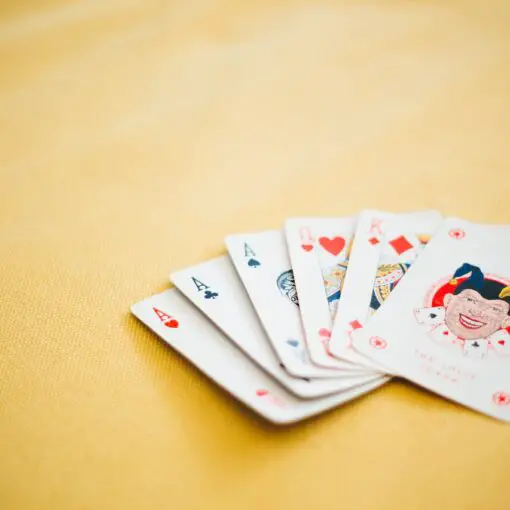Have you ever heard of the phrase, “to read between the lines?” It means digging deeper into the text you’ve just read, or not taking it at face value. Reading between the lines means understanding what you’ve read and making judgments based on what you’ve read.
Reading between the lines is reading with critical thinking. And this skill is an important asset to have, no matter what career or future you want in life. But what exactly is critical thinking and how can you use it in reading and writing?
Examples of Critical Reading
Critical reading is the use of critical thinking in reading. You’ll have most likely encountered this during your school years, when an exam lets you read a passage or essay and then asks you questions about the text you’ve just read.
A simple example of critical reading would be:
John came inside the house, dripping water from the top of his head down to the soles of his shoes.
Simple reading would tell you that: 1) There’s a person named John, 2) and he’s wet.
But using critical thinking in reading, you would know that: 1) There’s a person named John, 2) it’s raining outside, 3) he didn’t have an umbrella or raincoat.
The sentence about John never mentioned any rain or umbrellas, so how do you know what was going on? With the use of critical thinking, you made logical inferences based on the scenario and facts stated in the text.
Why is Critical Thinking Important in Reading and Writing?
Critical thinking is important because you’ll need it to decipher the nuances that are hidden within a simple text. Or, if you are writing to someone, you can tell something in a not-so straightforward manner. In creative fiction, this makes for a more unique and dynamic storytelling, which will be more enjoyable to the reader.
Critical thinking in reading and writing will also enhance and train your brain into using this skill in every day events. Critical thinking is also important in judging fact from opinion, and making your own opinions based on facts and logic.
How to Use Critical Thinking in Reading?
Here are some tips on how to use or train your brain into reading critically:
- Set Aside Your Judgments. Your personal thoughts and opinions might cloud your interpretation of the text. Approach it with an open mind and let the author speak to you through their words.
- Learn to Spot Factual Sources. Anyone can just post anything on the internet, and claim it as fact. The reason why so many people fall prey to hoaxes and unscientific claims is because they didn’t exercise critical thinking when reading. Learn how to differentiate facts from opinions by looking at the source(s). Are they credible? Are they backed by research or studies? Is there more than one source? Is it linking or quoting research, surveys, or studies?
- Do a Second (or Even Third) Reading. Have you ever experienced hearing a song and thinking the lyrics were one thing, but then you actually looked for the lyrics and found out it was completely different? Sometimes the true meaning can go completely unnoticed if you breeze through the text too quickly. The best thing to do is to read the text more than once. The first reading is to get a general understanding of the material or text. The next ones are for a more thorough analysis. Don’t breeze through your second reading.
- Question. Don’t take the text presented to you at face value. Question it, then find the answers within the text itself. Questions such as, “What is it that this text is really trying to tell? What are the things implied in the context? How are the things described in the text relate to each other?” By questioning the text, you can explore more of what the author wants to tell that were left unwritten.
- Interpret and Evaluate. If you have understood a piece of text, you’ll be able to rewrite it after reading. But that is simple reading. When you read with critical thinking skills, you’ll be able to interpret the text and add your own thoughts and opinions. For instance, in the example given above, you can interpret it as John has forgotten to bring an umbrella, and evaluate it as saying John is forgetful. Neither of these things were told in the text, but with critical reading, you’ll be able to make these assumptions.
How to Use Critical Thinking in Writing?
If you want your readers to use their critical thinking skills when reading your text, try the following tips:
- Don’t Underestimate Your Audience. Knowing your audience is the basic rule in writing. For them to understand you, you need to get on to their level and write as such. However, underestimating your audience is also something that will hinder critical reading. When you underestimate your audience, you’ll make things easy for them. For example, you’ll simply write “John forgot his umbrella and got wet in the rain” instead of the example given earlier. This might be okay if your audience are small children, but critical readers will get bored and frustrated.
- Show, Don’t Tell. This is something commonly used in creative fiction, but it can be useful in other kinds of writing, too. Showing rather than telling gives your readers the chance to analyze. For example, instead of simply telling your reader that John is sad, show your readers by saying something like, “John’s face darkened. The corners of his lips sagged. He trudged upstairs with heavy footsteps and locked himself in his bedroom, taking neither food nor drink for the night.” Which one made a clearer picture? The second passage never mentioned the phrase “John is sad,” yet the picture of a sad John is stronger within it.
- Plan Ahead and Draft Your Text. Much like having to read twice or thrice, planning and drafting before releasing the final text is the author’s way of analyzing their own writing. This is important in academic and business-related writings, because you’ll be able to gather all your evidence, line up your arguments, and present your case in a coherent flow.
- Have the Answer to All the Questions. Remember when you were advised to question the text so you can use critical thinking when reading? Well, your audience won’t be able to ask questions if you don’t have the answers. When planning out and drafting your work, make sure to answer these two questions: What is it that you’re really trying to say? And how are you going to show it?
- Leave a Bit of Elbow Room for Discussion. When doing opinionated pieces, don’t go too heavy-handed on your own opinions that it leaves your audience against a corner. State your opinion, based on facts and logical assumptions, but leave a bit of room so your readers can question, analyze, and decide for themselves if your opinions are right or otherwise. Much like showing than telling, creating an environment where readers can decide for themselves rather than shoving an opinion down their throats is the best way to use critical thinking in writing.
Conclusion
Critical thinking is a skill that can be used in so many aspects of life. This is why schools focus on developing and honing this skill early on. Two of the best ways to do this are by reading and writing.
Try the tips mentioned above the next time you read or write a piece. See if it makes you think critically!





